-
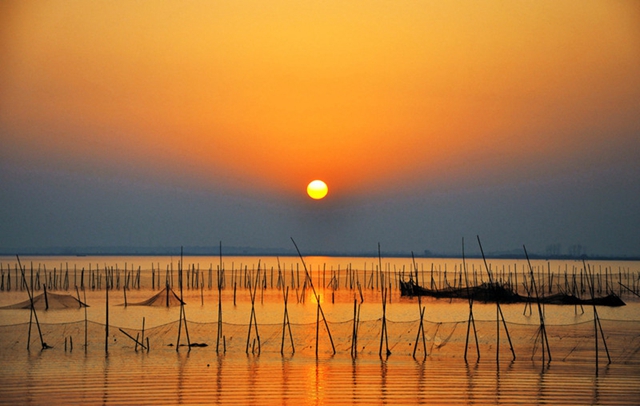
As the famous Chinese fresh water lake, second only to the Poyang Lake in Jiangxi Province, the Dongting Lake spreads wide on an area of 1,300 square kilometers.According to geologists, the lake area used to be part of an ancient anticline in south of the Yangtze River, but fell in a rupture during the movement of the Mount Yangshan 70 million years ago and became a lake.Dongting Lake is composed of East Dongting, South Dongting and West Dongting. In ancient times, East Dongting Lake was a part of Yunmeng Pool. The East Dongting Lake Nature Reserve is one of China\\\'s 30 important wetlands in the Ramsar Convention on Wetlands. Every year, 217 species of migratory birds under state protection live through the winter here, such as white storks, white cranes, grey cranes and egrets. It will be a great fun if tourists take a boat tour in the lake, observe birds, listen to the waves, go fishing and taste delicious fish dishes in the nature reserve.The Sanjiangkou Estuary (the confluence of Xiangjiang River, Yanjiang River, Jingjiang River) is another tourist attraction in Dongting Lake, where the lake meets the Yangtze River. As the lake\\\'s water is clear while the water from the river is turbid, the clear-cut currents were called by the ancients as \\\"River Meeting\\\"-a fantastic sight rarely seen elsewhere.To expedite the transportation between Hunan and Hubei provinces, in recent years, the government has built Yueyang Bridge on the Dongting Lake-the longest highway bridge in China. Spanning over East Dongting Lake, the bridge is 10, 174.2 meters long, and is the first bridge with three main towers suspended with double-cable support in China. In addition to relieving traffic pressure, the bridge provides an express thoroughfare to facilitate emergent transportation of goods for floor control.Transport: Bus Nos. 5 and 20Tel :(+86)730-8635328
HOT Changde & Yueyang & Hengyang
2022-05-22 17:26
View:5521
-
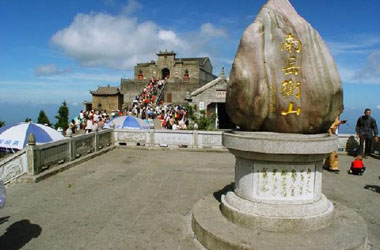
Hengshan MountainMt. Hengshan, also known as Southern Heights Mountain (Nanyue shan), is located about 120km south of Changsha. It is one of the five sacred Buddhist mountains in China, although much of the mountain is also dedicated to Taoist belief. The mountain extends for 80 kilometers and there are a total of 72 peaks in all, the highest of which, the Wishing for Harmony Peak (Zhurong feng), rises to 1,298 meters above sea level. This is a pretty area, that is sometimes a little too popular, although filled with enough charming Buddhist and Taoist temples, some dating back over 1000 years, and pretty scenery to make it worth your while.At the foot of the mountain stands the biggest temple in southern China, the Grand Southern Heights Temple (Nanyue damiao), which covers an area of 100,000 square meters and which is the largest group of ancient buildings in Hunan Province. The original temple is said to have dated back at least as far as the Tang Dynasty (618-907 AD), although it was destroyed by fire at various stages. The present temple dates back to the Qing Dynasty (1644-1911 AD) and is based on Beijing\\\'s Imperial Palace. There are nine courtyards here, with the main hall as a highlight, at 22 meters high and supported by 72 stone pillars in tribute to the mountain\\\'s peaks. The temple, glazed in red and yellow, is linked with many other buildings and is a grand palace complex.The area to arrive in for an ascent of the mountain is not the town of Hengshan, but a village nearby known as Nanyue. After finding accommodation (see below), you can visit the above temple and then set off into the heights (the entrance fee includes a crude, but useful, map), for a days walk that is enlivening and fun. The temples on the mountain are mostly austerely charming and small, meaning that an ascent to the top, including visiting numerous temples, and a return to the village, should not take more than around 10hrs (i.e. a long day). The most interesting of the temples here is at the peak, the Wishing for Harmony Palace (Zhurong gong), that is good for its mystical appearance, often through the mist, and the charm of its solid stone walls and iron roof. Other temples definitely worth a visit include the Wishing for the Emperor Temple (Zhusheng si), just out of the village, that was built for an unconsummated imperial visit by the Qing Emperor Kangxi, the Southern Terrace Temple (Nantai si), that was built during the Yuan Dynasty (1279-1368 AD) and is regarded as the origin of a Buddhist branch in Japan and the Fangguang Temple (Fangguang si), that is quiet and has some breathtaking views. Hengyang Nanyue Great Temple(Nanyue Damiao)Nanyue Great Temple is located at the end of North Street in Nanyue Guzhen under the foot of Nanyue Mountain. It was built at the reign of Emperor Kaiyuan thirteen years in Tang Dynasty. The main hall was rebuilt according to the design and style of Beijing Imperial Palace at the reign of Emperor Guangxu 8 years (1882). It occupies a land area of 98,900 square meters altogether and the height of the palace is 72 feet. It is the biggest and most complete ancient palace like temple in overall layout in our country’s five mountains. Nanyue Great Temple is composed of four groups of courtyards and nine buildings and maintained the Tang and Song’s artistic essence. Nanyue Great Temple is divided into seven entrances. Each entrance possessed its own unique characteristic and purpose where it displayed the architect’s exquisite craft and skill. Lingxin Gate, the entry gate to Nanyue Grant Temple, is 20 meters in height, 20 meters in width and 1.1 meters in thickness. It is the only stone entry gate of such height and width that remains in China. On each side of the gate, there are one side entrances to the Taoism temples and Buddhist temples. In the second courtyard of Nanyue Grant Temple, a stage called Kuixing Pavilion is built to deliver performance to entertain the Gods. The 2 meters high granite stage has been particularly designed and carved to amplify voices of the performers on the stage.Marquis Cai Memorial is originally the residence of Cai Lun, the inventor of paper making skill in Eastern Han Dynasty. People built the memorial in the original place of the residence to memorize Cai Lun. According to Annotation to\\\'Scripture of Hydrology and Geography\\\' by Li Daoyuan, \\\"Lei River passes Caizhou in northwest. The west of Caizhou is the original residence of Cai Lun, near where there is Cai Zi Pool.\\\" On the bank of Caizi Lake in northern Leiyang City, a memorial hall was built in memory of Cai Lun (A.D. 63-121AD), the inventor of paper-making technology. It occupied an area of 408 square meters. It was made with brick and wood structure and faces the north. The memorial hall consists of three wood-brick bungalow. The hall is elegantly designed and constructed. It houses a statue of Cai Lun and a number of historical documents relating to paper-making technology. The hall is of great historical and cultural value. It is not exactly known when Marquis Cai Memorial was begun to be built. In 1338 AD, Chen Zongyi, the governor of Leiyang city, rebuilt the memorial. Being destroyed and rebuilt for several times, the building remaining today was rebuilt in Qing Dynasty. It is simple, unsophisticated and elegant. Facing the south, it takes an area of 408 square meters and is of brick-timberwork. There are three layers and two courtyards. In the antehall, there are three small housese with green tile roof. There are corridors in the two sides. The middle axis is a paved path with cover leading to middle hall. There are also three houses in the middle and back halls, connected with walkway and corridor. Over the main door, there is a stone plaque of \\\"Marquis Cai Memoriall\\\", a stone couplet of \\\"with beautiful pool and shining moon, the style of the original residence remains here\\\". Cai Lun invented paper-making in A.D. 105 years, made the world first plant tissue paper, rewriting the history of bamboo and cloth writing note. It became one of the four greatest inventions in ancient times of China. More than a thousand years later, the skill of paper- making is passed to the Eastern Asia and Europe. FuShou Culture The South Mountain (MountHengshan) is the Shou Mountain in China\\\'s Five Sacred Mountains.Its blessing and Shou culture has a long history and over a long time it is ahalidome for blessing and begging for long life. South Mountainwas called the \\\"Shou Mountain\\\" since the Han dynasty. Since SongHuizong left the carved stone \\\"Shou Mountain?\\\" in the Jinjian peak of South Mountain, the name\\\"ShouMountain?\\\" was popular. For thousands of years, the South Mountain has been respected as the symbol of long life and prosperity.South Mountain has a prosperous shou mountain culture and the atmosphere is dense. Many architectures and relics are named after \\\"shou\\\", such as Wanshou Palace, Shouning Palace, Shoujian Bridge, Shoujian Stream, Baishou Booth, Yanshou Booth, Yanhou Village, Shoufo Hall,etc. The Tripod is located at the top of Jiahe Peak behind the Nanyue Grant Temple. The Tripod is 9.9 meters in height and 56 tons in weight, representing the unity of the 56 nationalities in China and longevity of its people. A total of 10,000 gold characters of \\\"Shou\\\" (Longevity) in different Chinese writing styles are engraved on the frontispiece of the Tripod, with the biggest cursive script \\\"shou\\\" written by Chairman Mao Zedong. According to the Guinness World Records, the tripod is the tallest, heaviest and largest of its kind in the world.
HOT Changde & Yueyang & Hengyang
2021-10-05 20:21
View:10959
-
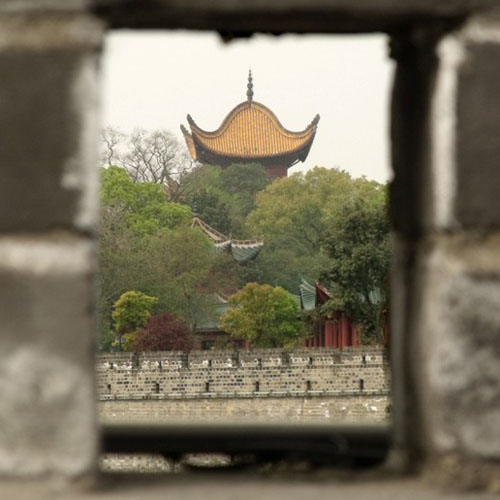
The Yueyang Tower is an ancient architectural treasure on the shores of Dongting Lake in Yueyang City, Hunan Province. It is known as one of the four famous Chinese towers,. The other three are the Yellow Crane Tower in Hubei Province, the Penglai Pavilion in Shandong Province and the Tengwang Pavilion in Jiangxi Province.The tower was first built around 220 during China's Three Kingdoms Period (220-280), when Lu Su, commander in chief of the forces of Wu, was sent to the area to fortify it and he trained the fleet there. The main tower bears a flying eave and helmet roof with wooden constructions in a unique style.Standing on the tower, visitors can enjoy a panoramic view of Dongting Lake.
HOT Changde & Yueyang & Hengyang
2021-03-22 01:06
View:7060
-
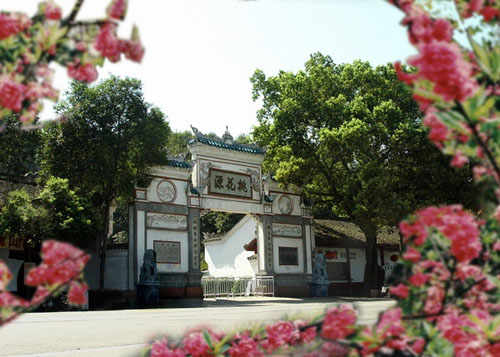
Taohuayuan Fairyland is situated in National 4-A Tourism Scenic Spot Taohuayuan, Taoyuan County. Being an extraordinary geographical location, it is adjacent to Wuling on the south and Yuanjiang River on the north. Portrayed as a fairyland by the Eastern Jin Dynasty poet Tao Yuanming (about 365—427) in his famous Records of Peach Blossom Source, Taohuayuan, with a long history of more than 1600 years, is renowned at home and abroad for its pastoral beauty of its mountains and waters, and for the popularity of its temples and tablets.. Shiwaitaoyuan(世外桃源,a hidden paradise) has for generations represented mortal beings’ spiritual dwelling and ideal pursuit. Location: Taohuayuan Tourism Resort is located in the lower reach of the Yuan River and in the southwestern part of Taoyuan County. It includes Taohua Mountain, Taoyuan Mountain, Qin Dynasty Village, Taoxian Mountain, the Lingjintan Scenic Spot, the Yiwangxi Scenic Spot, and the 69 km Yuan River Tourist Line. It has a total area of 157.55 km2. Its scenic area incorporates five villages and towns: Qinglin Village, Zhangjiang Town, Taohuayuan Town, Lingjintan Village and Xinglongjie Village. History: Taohuayuan is the prototype of a wonderful place far from the cruel reign of the Qin Dynasty described in Records of Peach Blossom Source by Tao Yuanming, a famous poet in the East Jin Dynasty. It has a 1,600-year history and has been regarded as a Shangri-la by later generations. Taohuayuan was first built in the Jin Dynasty (256-439 A.D), began to take shape in the Tang Dynasty (618-709), flourished in the Song Dynasty (960-1297), and went to ruin in the Yuan Dynasty (1297-1368). With ups and downs through the Ming Dynasty (1368-1911), it was almost abandoned in the times of the Republic of China (1912-1949). Its restoration began in 1949 and a large-scale expansion and development began in 1990. Even 5,000-6,000 years ago, fishermen lived in the Taohuayan Scenic Area. It belonged to the Chu Kingdom in the Warring States Period, Qianzhong Shire in the Qin Dynasty, Yuannan County of Wuling Shire in the Han Dynasty, and Yuannan County of Jingzhou Wuling Shire in the Jin Dynasty. In the early Tang Dynasty, the government defined the range of the Taohuayuan Mountain. Liu Yuxi, a famous litterateur in the Tang Dynasty, often went sight-seeing in Taohuayuan and wrote Beautiful Scene of Taoyuan when he was demoted here. In the first year of the Qiande Period of the Song Dynasty (963), the government Pided the area into the middle and lower reaches of the Yuan River in Taohuayuan, and it established a new county called “Taoyuan” where there were scenic spots and historical sites. In the first year of Zhenghe, Emperor Hui of the Song Dynasty wrote “Taochuan Longevity Palace” on a stele and sent it to Taoyuanyuan. After that, it became even more famous. Even in the Yuan and Qing Dynasties and during China’s Republican Period when the area found itself intermittently in either prosperity or depression, Taohuayuan was still of great charm.Culture: Since the birth of Records of Peach Blossom Source by Tao Yuanming in the Eastern Jin Dynasty, later generations have continually praised Taohuayuan in writing. As a result, both its scenery and the writings about it became famous. The wonderful place far from the cruel reign of the Qin Dynasty described in Records of Peach Blossom Source by Tao Yuanming was admired and praised by the later litterateurs as the prototype of “Shi Wai Tao Yuan (remote retreat)”. Many famous poets, litterateurs, officials and Taoists since the Tang Dynasty have had a special longing for it and tried their best to praise it. Such famous litterateurs as Meng Haoran, Wang Changling, Wang Wei, Li Bai, Du Mu, Liu Yuxi, Han Yu, Lu You, and Su Shi have left a legacy of many valuable poems and proses. There are now 45 volumes of various Collections of Writings about Taohuayuan and Annals of Taohuayuan from different periods, more than 2000 verses, more than 130 thousand characters of prose, 107 horizontal inscribed boards and couplets, 108 pieces of inscribed and engraved stone tablets, more than 600 paintings and more than 40 folklores about Taohuayuan.Brand: In 1959, Taohuayuan was placed on the list of “Provincial-level Key Cultural Relics Under Protection by the Hunan Provincial Government”. In 1987, it was listed as one of the “Top Ten Scenic Spots of Hunan by the Hunan Provincial Government”; in 1992, it was approved as a National Forest Park by the Forestry Ministry of China. In 2001, it was approved to be a National AAAA Grade Scenic Spot by the National Tourism Administration of China; and in 2004, it was approved to be a Key National Scenic Spot by the State Council. On the 24th of March 1995, President Jiang Zemin came to Taohuayuan. After making an inspection tour of cultural relics and natural landscapes, he said “This is the real Taohuayuan described by Tao Yuanming” and he wrote an inscription as a memento. It was also appraised continually for 4 years as one of “the Best Scenic Spots of Hunan” and as a “Civilised Forest Park of Hunan”. In 2000, Taohuayuan was recognised as one of the 50 scenic spots you have to visit in your lifetime. On the 12th of June 1998, in the Fifth International Conference for the Grammy Awards for the Golden Tourism Lines co-held by Tourism Weeks and the Japanese Writers Association in Osaka, Japan, the tourism line of Changsha—Taohuayuan—Zhangjiajie was awarded the “Destination Special Development Award”, being one of the two awarded golden tourism lines of China.Transportation: Taohuayuan, located in the northwestern part of Hunan Province, is the gateway to the western part of China. It is surrounded by Changsha, Shaoshan, Zhangjiajie, Three Gorges, and Western Hunan Autonomous Prefecture and has a distance of about 200 km to each of them. It has convenient air, water and land links, with the National Highway 319 running through the area, the National Highway 207 passing by its eastern part 30 km away, and is 40 km away from the Changsha-Changde Expressway, 20 km away from the Taoyuan Toll Gate on the Changde-Zhangjiajie Expressway, the Changde-Jishou Expressway and the Changde-Shaoyang Expressway, Changde-Yueyang Expressway, Changde-Jingzhou (Hubei Province) Expressway. The Yuan River, a main waterway of Hunan Province, can directly reach Yueyang and the Yangtze River by passing through the Dongting Lake. The Shimen-Changsha Railway (from Shimen to Taoyuan to Changde to Yiyang to Changsha) has a main railway station in Changde which is only 50 km away from Taohuayuan and provides a convenient connection between Taohuayan and the cities along the Beijing-Guangzhou Railway and the Jiaozuo-Liuzhou Railway. Taohuayuan Airport, a National Second Level Civil Airport, is only 34 km away from the scenic spot and has already opened airlines to Shenzhen, Guangzhou, Beijing, Shanghai, Haikou, Kunming, Chongqing and so on.Animals and plants: Taohuayuan has a favourable environment for animals to live and has a complex food chain. It has a rich resource of animals and plants. There are 255 kinds of beautiful exhibiting animals, among which 230 are wild, forming 90% of the total, and 25 are tamed, 446 kinds of woody plants, among which 63 are peach species, forming 13.8% of the total, more than 740 kinds of herbs, among which 238 are beautiful and fragrant group plants.Service facilities: In the Taohuayuan Tourism Resort there are more than 10 hotels and more than 30 restaurants, with a reception capacity of more than 2,000 tourists per day; there is a national primary-level power supply line, a waterworks with a production capacity of 40 thousand tons per day, Changqing Gas Station, a petrol station co-managed with the Changling Refinery, a post office, two China Mobile micro receiving towers and two China Unicom micro receiving towers and 2,000 programmed control telephone exchangers.
HOT Changde & Yueyang & Hengyang
2021-03-15 19:38
View:6427
-
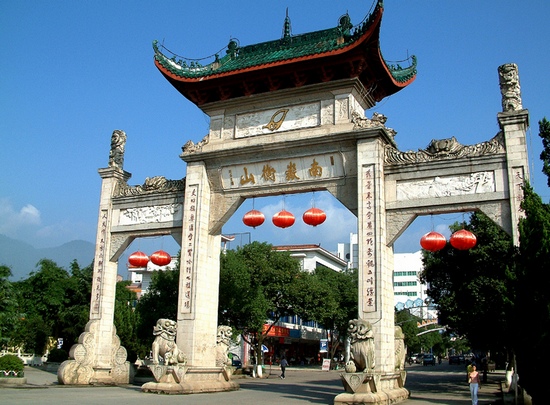
Mountain Hengshan, The South Great Mount, is one of the five great mountains in China. Located in Heangyang City, Hunan Province. The mountain has 72 peaks, stretching 400 km, with the lofty peaks, grand and magnificant temples.Mountain Hengshan, The Great Mountain of the South, is known as one of the five great mountains in China. Located in Hengyang City, Hunan Province, the mountain has 72 peaks, stretching 400 km, along with, grand and magnificent temples. The highest peak, Zhurong peak, stands 1,300.2 meters above sea level. The mountain has been reputed as \\\\\\\\\\\\\\\"The most elegant mountain among the five great mountains in China\\\\\\\\\\\\\\\", \\\\\\\\\\\\\\\"A sacred place of religious value\\\\\\\\\\\\\\\",\\\\\\\\\\\\\\\"China\\\\\\\\\\\\\\\'s mountain of Long-Life\\\\\\\\\\\\\\\" and \\\\\\\\\\\\\\\"A mountain of high civilization\\\\\\\\\\\\\\\" Hengshan is now a key site at the national level, being one of the first 5-A tourist resorts in China, and deemed noteworthy by China\\\\\\\\\\\\\\\'s natural reserves foundation, the Chinese Natural & Civilization Heritage. The mountain is visited by 3 million tourists annually.The Mountain is the known as most elegant among the five mountains in China, featuring dense trees, flowing springs and waterfalls, together forming a beautiful landscape. The scenery can change dramatically with the seasons. Tourists can enjoy rare flowers in the spring, a sea of clouds in the summer, the beautiful sunrises in the fall, and snow-capped peaks in the winter.Apart from its scenery, what marks the mountain as a popular tourist spot is its rich cultural background; with its numerous places of historic interest and scenic beauty, as well as a great number of Taoist and Buddhist temples. It is the only mountain in the world where monks of Buddhist and Taoist followings share the same mountain, as well as the same temples.Mount Hengshan is also regarded as a source of long-life. The Scripture of Stars, found in the ancient text Chronicles of Sui Dynasty, describes the corresponding star of Mount Hengshan, the Great Mountain of the South, as a part Zhen, one of the Twenty-eight Constellations. Alongside the Changsha Star, Zhen is in charge of administrating human life. Due to its cosmological history, Mount Hengshan is known as the Mountain of Life. Also according to the explanation of the word \\\\\\\\\\\\\\\"Mountain of Life\\\\\\\\\\\\\\\" in the \\\\\\\\\\\\\\\"Origin of Words\\\\\\\\\\\\\\\", “The mountain of life\\\\\\\\\\\\\\\' refers to-Mount Hengshan, The Great Mountain of the South”. This explains Mount Hengshan\\\\\\\\\\\\\\\'s alternate name, “China\\\\\\\\\\\\\\\'s Mountain of Long-Life”.
Changde & Yueyang & Hengyang
2017-05-22 17:23
View:5350
-
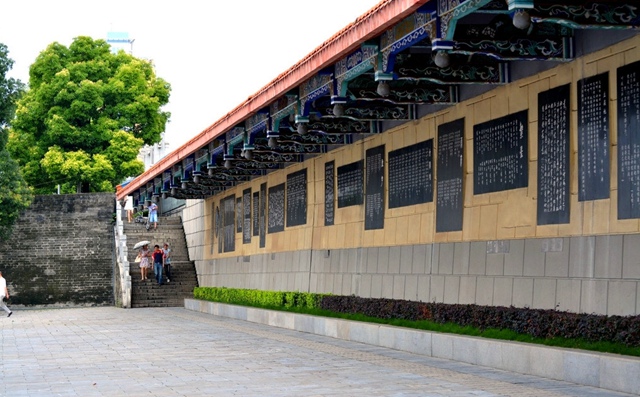
Changde Poem Wall is a 3-kilometer-long anti-flood dyke alongside the Yuanjiang River, which is engraved with poems, calligraphy and painting. Thus, it is listed as the longest wall with engraved arts in Guinness Book of World Record.There are art works from many famous Chinese artists and outstanding figures like Mao Zedong, Qi Baishi and so on.The Poem Wall is a large-scale cultural project with distinct artistic characteristics.Facing the river, the Wall is grand and imposing with the embellishment of towers. A total of 1,267 poems about Changde or noted poems at home or abroad have been selected and engraved on the wall. They fall into six chapters, Changes in Changde over Centuries, Celebrities’ Inscriptions on Changde, Beautiful Natural Scenery in Changde, Outstanding Natives and Local Customs, Big Events of China, and Great Poems from Other Countries.They are written in regular script, running hand, official script, seal character and cursive script in Chinese calligraphy by 948 calligraphers from mainland China, as well as Hong Kong, Macao and Taiwan, with 43 stone-wall carvings embedded.The name of the Wall and the titles of chapters are inscribed by well-known modern calligraphers, Zhao Puchu, Shen Peng, Qi Gong, Yan Jialong, Sun Qifeng, Wang Xuezhong, Xiao Xian, Zhang Ding, Zang Kejia, Fang Yi and Chen Tianran. The late artists Cao Yu, Shu Tong and Wu Zuoren have also left their mark there.With rich cultural meaning, positive ideological content and exquisite art, Changde Poem Wall draws visitors throughout the country. It is considered by the modern circles of poetry, calligraphy and painting to be unique in these fields and unique in China. It is regarded by Yu Guangzhong, a noted scholar from Taiwan, as “a Great Wall in the Poetry World”, and “a History Book of Literature”.
Changde & Yueyang & Hengyang
2017-05-22 17:21
View:5500
-
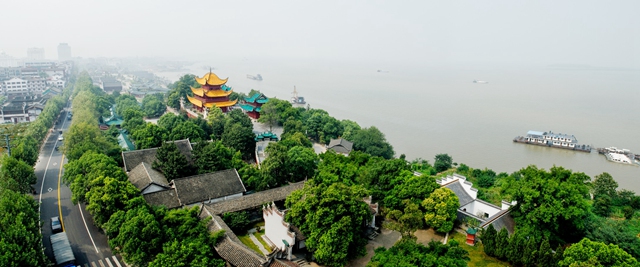
Standing on Yueyang Tower, gazing at picturesque Dongting Lake, visiting ancient architectural cluster in Zhang Guying Village, sailing and picking lotus seeds at Tuanhu Lake, and celebrating dragon boat racing festival in Miluo city, you are welcome to Yueyang.Situated in the northeast of Hunan Province, Yueyang has been famous in China for the picturesque Dongting Lake and gorgeous Yueyang Tower since ancient times.A Bright Pearl Beside the Dongting LakeDongting Lake, which is so vast and mighty that it seems boundless, is like a fancy satin belt encircling the ancient city of Yueyang. In Yueyang Tower, Fan Zhongyan, an outstanding official in Northern Song Dynasty (960-1127), sighed and said: “Be the first to worry about the affairs of the nation and the last to enjoy oneself.\\\\\\\" The tower stands on the ancient city, and looks down at Dongting Lake covered by mist and fog. In the long process of history, Yueyang Tower has attracted numerous literati, where they composed poems and appreciated the fascinating scenery, making the tower a cultural landmark of the city. The Yueyang Tower stands on the west gate of the Yueyang city wall, looking down at the Dongting Lake, facing the Junshan Island in the distance, and linking the Yangtze River to the north and the Xiangjiang River to the south. Standing on the tower, one can gaze at the distant view of the mists and ripples of the Dongting Lake, with boats sailing on the vast lake.The City of Dragon BoatYueyang, also known as the City of Dragon Boat, where Miluo River runs through, is the cradle of dragon boat culture. The event was originated from a piece of Chinese history; which says that on the 5th day of the 5th month of the Chinese lunar calendar in 278 BC, Qu Yuan, the patriotic poet, drowned himself in the Miluo River. In order to commemorate him, Yueyang held 10 consecutive international dragon boat races in the 1980s and 1990s. Since then, the Yueyang International Dragon Boat Festival has been held every year, and these days, more than 100 teams from all over the world participate in the competitions.A Land of Milk and HoneyWith beautiful scenery, pleasant climate, fertile lands and rich products, Yueyang is reputed as the Land Flowing with Milk and Honey.
Changde & Yueyang & Hengyang
2017-05-22 17:09
View:5214
-
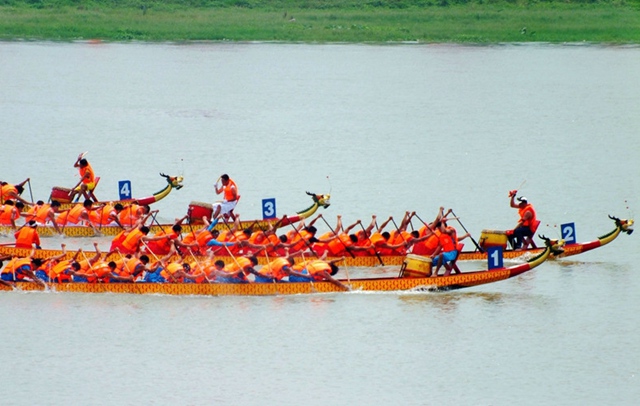
Yueyang Miluo River (Miluo Jiang)Area: YueyangKey Words:Yueyang Miluo River (Miluo Jiang)Themes:holiday, culture, folk customs, natural scenerySuitable for: lovers, students, tour palsIntroductionMemory of the Miluo RiverMi-(mì) LUO Jiang-Xiangbei in the Xiangjiang River is the largest tributary in Hunan Province. Mi-water upstream has two sources: derived from the East Xiushui County of Jiangxi Province; west expenditures in the northeast of Hunan Pingjiang Xian Long-Zhang Shan, two tributaries of Pingjiang Xian in the west concourse, the westward into the Miluo City, Lei Rock Hill into Dongting Lake . Miluo River totals a length of 253 km, a basin area of 5,543 square kilometers. Miluo River originates in Xiushui County, Jiangxi Province, and the west flows through the Pingjiang Xian, Miluo City (Mi-water and LUO Jiang-in the county in the concourse), into the Xiangjiang River to Xiangyin County. The trunk stream is 253 km long, the basin area 5,543 sq. miles, the largest tributary in the Xiangjiang River range in Xiangbei.Miluo River has main tributaries such as paper Ma River, the cars on the River, Tung Chung River, and papaya River. Luo water originated from Aupui Township,Yueyang County,southwest flow to Miluo City, with a length of 88 km and the valley area of 595 square kilometers. Chang also known as Mei Xianshui rivers,with a length of 84 km and the valley area of 670 square kilometers.Miluo River is famous for the prominent Qu Yuan. Qu was a Chinese scholar and minister to the King from the southern Chu during the Warring States Period. His works are mostly found in an anthology of poetry known as Chu Ci. His death is traditionally commemorated on the occasion of the Duanwu Festival (端午节/端午節), which is commonly known in English as the Dragon Boat Festival or Double Fifth (fifth day of the fifth month of the traditional Chinese calendar).In 278 BC, learning of the capture of his country\\\'s capital, Ying, by General Bai Qi of the state of Qin, Qu Yuan is said to have written the lengthy poem of lamentation called \\\"Lament for Ying\\\" and later to have waded into the Miluo river in today\\\'s Hunan Province holding a great rock in order to commit ritual suicide as a form of protest against the corruption of the era.Qu Yuan is regarded as the first author of verse in China to have his name associated to his work, since prior to that time, poetic works were not attributed to any specific authors. He is considered to have initiated the so-called sao style of verse, which is named after his work Li Sao, in which he abandoned the classic four-character verses used in poems of Shi Jing and adopted verses with varying lengths. This resulted in poems with more rhythm and latitude in expression. Qu Yuan is also regarded as one of the most prominent figures of Romanticism in Chinese classical literature, and his masterpieces influenced some of the greatest Romanticist poets in Tang Dynasty such as Li Bai.Other than his literary influence, Qu Yuan is also held as the earliest patriot in China\\\'s history. His social idealism and unbending patriotism have served as the model for Chinese intellectuals to this day, particularly following the establishment of new China in 1949. For example, in the 1950s China issued a postage stamp bearing the \\\"likeness\\\" of Qu Yuan.Address: west of Dongting Lake, YueyangTickets: 20 yuanOpening timeFolk customes : Dragon boat races
Changde & Yueyang & Hengyang
2017-05-22 17:07
View:7321












